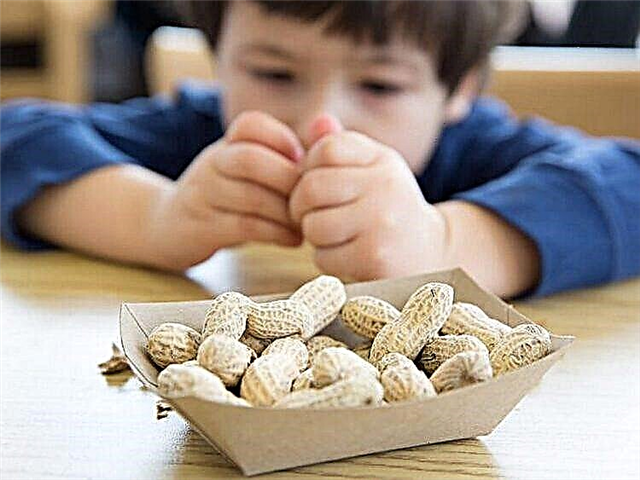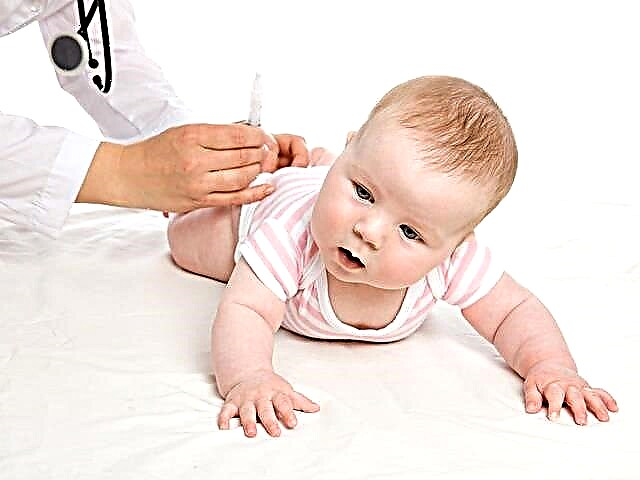Boogers in a child are dry crusts that form in the nasal cavity from mucous secretions. The mucous membrane of the nose, being a natural filter, purifies and moisturizes the inhaled air. If a large number of foreign agents are present in the atmosphere, the viscosity of the mucous membrane increases, and after the evaporation of moisture, dry crusts are formed, which are popularly called boogers. They often scare parents.

Boogers in babies can appear from infancy
Reasons for the formation of boogers
In a child's nose, dry boogers most often appear for the following reasons:
- The baby spends a lot of time in a room with dry air (most often we are talking about a central heating operating in the winter or a heater).
- The baby lives in a big city and on walks is forced to breathe gassed and dusty air.
- Due to the anatomical features of the structure of the nose. Most often, this happens with curvature of the septa or hypertrophy of the sinuses. Such pathologies are usually diagnosed by a doctor, and they are accompanied by increased dryness of the mucous membrane, headaches and formations of growths inside the nasal passages.
- If a baby is in frost or heat for too long.
- The condition of the mucous membrane may be affected by insufficient fluid intake - due to a lack of moisture, the mucous membrane becomes thicker and crusts form.
- Under stress.
- With a sharp change in climate.
Important! It is possible to humidify the air in the apartment not only through wet cleaning, but also with the help of special humidifiers. The latter can be replaced with containers filled with clean water and placed around the room. In the summertime, it is effective to cover the windows with a pre-moistened gauze cloth. Such a move will not only increase the humidity in the room, but will also prevent dust or equally dangerous pollen from entering it.

Children should be weaned from picking their noses from an early age.
Treatment is not required in all of these cases. Most often it turns out to be enough to simply eliminate the cause of the bugs.
In some cases, a goat in the nose (especially green or bloody) can be a symptom of one of the following conditions:
- ARVI;
- herpes viral infection;
- adenitis;
- acute infectious diseases;
- chemical or thermal burn.
Important! To understand what is the reason for the appearance of boogers and, if necessary, begin adequate treatment, the baby must be shown to a specialist without fail.
Types of boogers
In appearance, which has a goat in the child's nose, one can understand both the reason for its appearance and the way to eliminate it.

Do not be afraid to show your baby to the doctor once again.
Green boogers
Green boogers in babies are dried thick mucous secretions of green color. The reasons for their appearance may be the following factors:
- active purulent-inflammatory process inside the nasal cavity;
- bacterial or viral damage to the sinuses;
- congestion inside the sinuses against the background of an implicit or sluggish lingering allergy.
Regardless of the reason for the appearance of green boogers in a newborn, their presence indicates a chronic course of some kind of inflammatory process. In this case, it will be necessary to treat the nose.
Yellow boogers
Yellow bugs in a newborn can be both an indicator of recovery from an illness, and evidence of the presence of an inflammatory process, accompanied by the release of pus. As a rule, their appearance is preceded by the appearance of yellow snot.
Important! If the yellow snot is too abundant or lasts for a long time, the situation is fraught with complications in the form of otitis media, sinusitis or sinusitis. The baby should be shown to the pediatrician without fail. With a high degree of probability, the doctor will prescribe antibacterial drugs and medicines, the action of which is aimed at strengthening the child's immunity.
Boogers with blood
Since the nasal mucosa consists of many capillary vessels, boogers with blood in infants are by no means uncommon. The fact is that if their integrity is violated, the blood seeps out, mixes with nasal mucus, and then dries up. Surprisingly, such boogers can appear even in perfectly healthy children. The reasons may be as follows:
- the presence of mechanical damage inside the nasal cavity (for example, if the child likes to pick his nose with his fingers);
- an increased indicator of dryness of the nasal mucosa (due to the abuse of vasoconstrictor drugs, low humidity in the room, etc.);
- vitamin C deficiency;
- viral infections;
- vascular spasms (for example, with a change in climate).
You should not be especially scared when you find boogers with blood in the nose of a baby, but it is still strongly recommended to deal with the reasons why they appeared.

Crusts in the nose may be evidence of pathology
Other options
If a child is one month old or older, he or she is healthy, he may still develop crusts in his nose - this is a normal process that can hardly be avoided. Their color will be transparent white. In rare cases, the cause of such boogers is a frothy rhinitis. Typically, frothy transparent snot accompanies allergies or bacterial infections.
When to go to the hospital
When it comes to a baby, any normal parent will not wait six months until the situation with the formation of boogers resolves itself. If the crusts do not pass within two weeks with constant humidification and airing of the apartment, this in itself is a reason for contacting a doctor. It is not at all necessary to immediately go to a pediatric otolaryngologist. In most cases, the local pediatrician will be able to cope with the problem.
Preventive actions
Practice shows that in young children, boogers appear much more often than in adults. This means that prevention in the case of them should be carried out much more intensively. The fact is that the child's body is more actively filtering the dust entering through the nose.
Important! Do not try to remove the crust from the baby's nose with cotton swabs. Such manipulations are likely to lead to damage to the mucous membrane of the organ. It will be much more effective to attend to the issue of organizing better humidification of the premises in which the child spends most of the time.
It is very important to soften nasal crusts in babies. Usually, with a regular procedure, the boogers go out on their own after a few days. You can take them out of the baby's nose, but not with a stick, but with a cotton swab rolled into a tube, which is recommended to be moistened with breast milk a little.
If the baby is bottle-fed, breast milk may well replace Aquamarine. One drop in each nostril will suffice.
Summarizing the above, in order to avoid the formation of crusts in the nose, you should ventilate the apartment and regularly wet it in it. If this or that pathology is not the cause of the boogers, such actions will be quite enough to eliminate the problem.
If a crust does appear, the first step is to try to clear the nose (in other words, let the child blow his nose). If this does not work, moisturize the inside of the nasal cavity and gently remove the boogers.

Parents should monitor the baby's health as carefully as possible.
The human body is a very complex system. If something interferes with his normal life, he will definitely signal this. Even seemingly harmless boogers can be a symptom of something more serious and requiring treatment. In the case of children, it is better to keep an eye out than to miss the beginning of the development of pathology.



